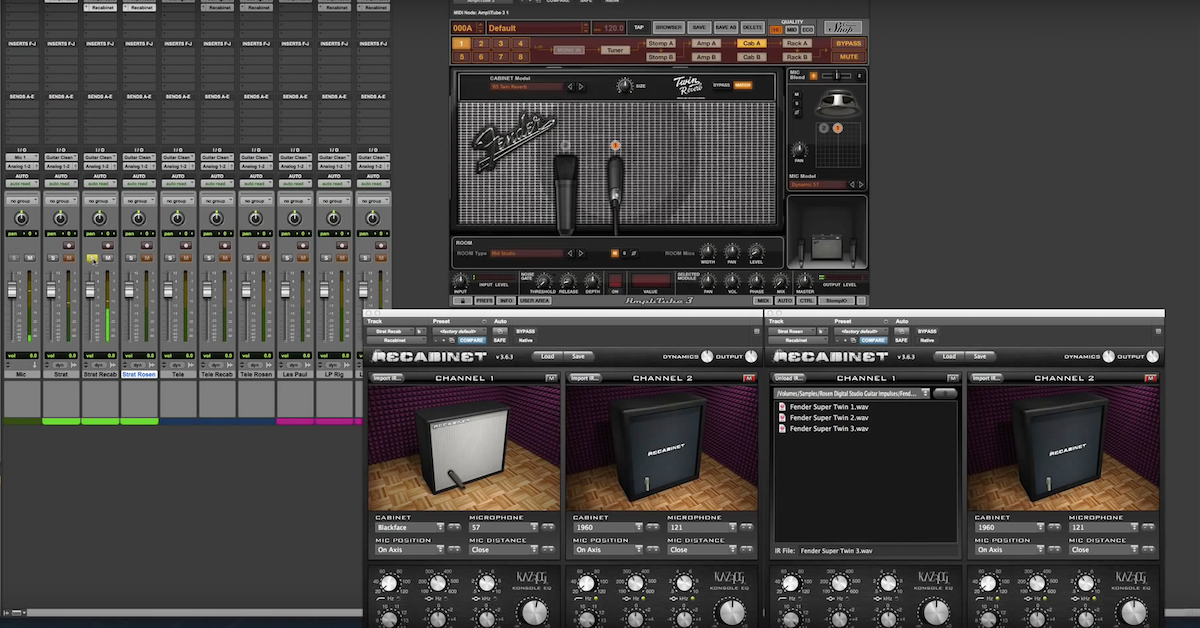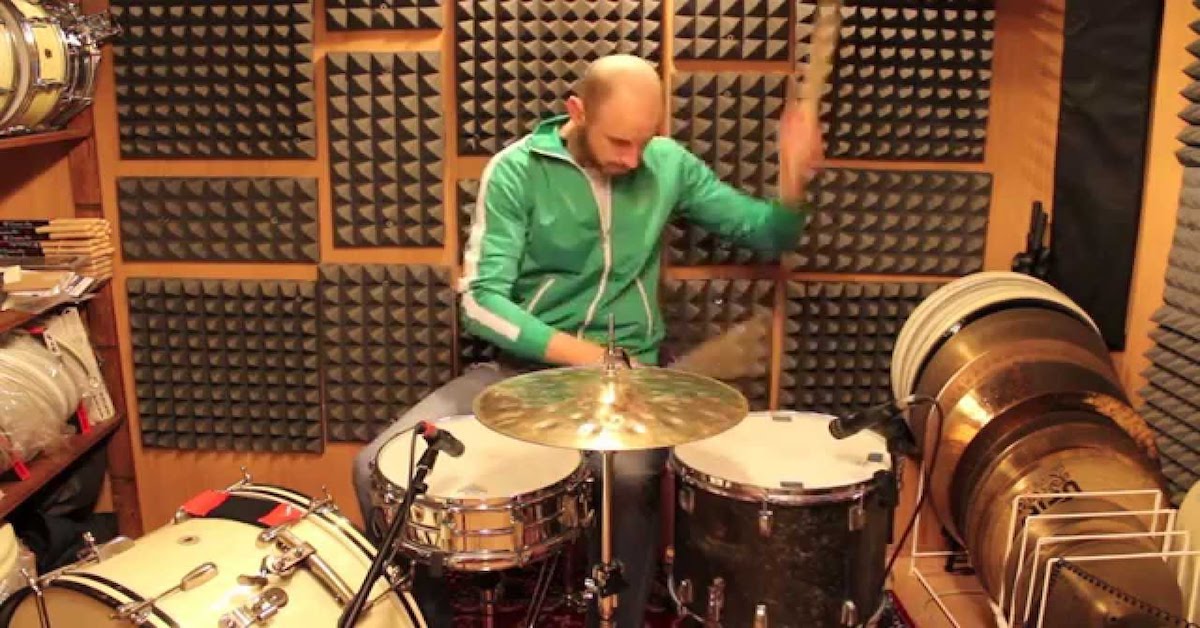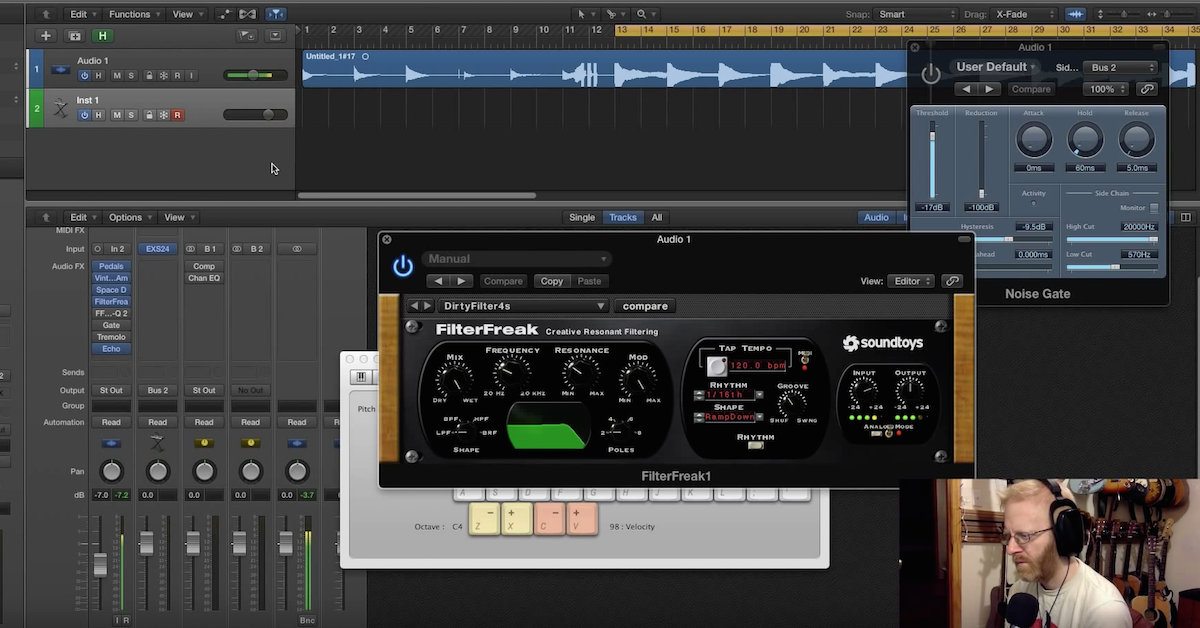Rosen Digital Cabinet Impulse Responses for Electric Guitar
Now, a lot of times, I think when you record direct and you’re using various software emulations, sometimes you don’t get the whole depth of field that you get when you record with a real guitar amp, so it might not sound horrible, but somehow, it’s made one-dimensional.
The Rosen impulses are really great, because I think they come the closest that I’ve heard using impulses to what the air and the depth of field feels like or sounds like using close micing.
The intention with these impulses were to kind of get more of an “in your face” kind of up front guitar sound for modern rock and pop music. I think they’ve done a really good job of that.
I’ve recorded some examples here, and I’ve been using the Softube vintage amp room. For this example, I’m going to use the vintage Marshall head emulation for the IRs, I’ve been using Space Designer from Logic. It’s just a standard plug-in that comes with it.
To start off, we’re going to use this Marshall 1960A cabinet, which is a 4×12 closed back cabinet. It’s one of the most recorded guitar cabinets of rock. It’s something that our ears are pretty familiar with.
Let’s listen to it a little bit.
[guitar 1 plays]
Okay, let’s compare that to the Softube emulation.
[guitar 2 plays]
Back to the Rosen.
[guitar 1 plays, then guitar 2 again]
The only alteration I’ll make to this sometimes, is I feel when you’re using amp simulation plug-ins for guitar amps, I feel like the low end has a little bit too much energy to it. It’s a little too excited. So it feels a little woofy. More than a guitar amp with a real microphone does, so what I use is this FabFilter plug-in, which is really an awesome EQ plug-in, and I basically just have it setup for a low-cut, as you can see. But it just takes a little of that woofiness out.
[electric guitar]
Just cleans it up a little bit.
And I’ll A/B this.
[guitar 2]
Okay, I’m going to A/B this with the amp room cab.
[guitar 2]
Still a little thin here, right? [mumbled words, overpowered by guitars]
[guitar 1]
And there’s the Rosen.
Let’s try a couple other cabs on this. The Mesa cabs are really good in this collection. Let’s pull up a couple of these Rectifiers here. Let’s listen.
[electric guitar 1 plays, Mesa cab]
I’m going to put off this FabFilter.
Let’s switch to a different Mesa.
[guitar 1 plays, new Mesa cab]
The Orange cabs are really nice as well.
[guitar 1, Orange cab]
[guitar 1, new Orange cab]
So, that’s using Softube’s Vintage Amp Room, FabFilter, and the Rosen guitar impulses with Space Designer.
Let’s switch gears a little bit, this time with a different signal chain. I’m going to be using Logic’s guitar amp simulation plug-in, as well as the Rosen digital impulse response for a Fender Twin Reverb, which for those of you that don’t know, is a 2×12 open back cabinet.
So, for as far as the Logic plug-in is concerned, I have it setup to emulate a Blackface era mid-wattage amp, say maybe like a Vibrolux. Something in the 30-50 watt range, and that is going to run through Space Designer that uses the Rosen impulse.
Let’s listen.
[guitar]
Okay, here is Logic’s amp and cab simulation together.
[guitar 2 plays]
It sounds a little more plastic-y, right?
Let’s go back to the Rosen one.
[electric guitar 1 plays]
Back to Logic.
[electric guitar 2 plays]
The impulses are really working great for me when I’m working late at night and can’t plug in amps, or if I’m doing, say, a commercial project that’s going to require a lot of revisions over time that it just isn’t practical to be setting up an amp and marking down all the settings, where the preamp was, where the microphone was, where the levels were on the amplifier… I could really just open this up and pull up the Vintage Amp Room with the Logic Emulation and get something up and running really quick.
It’s also great for mixing engineers when you’re working on a record with an artist who is maybe trying to record themselves, and they don’t have a ton of experience, it’s always great to get them to give you a direct signal, along with the other signal that they’re recording, because in the event that they don’t know how to record a great amp sound, you have opened up a backdoor for yourself that you can then pull up some plug-ins and put these cab impulse responses on them, and get them to sit much, much nicer in the mix, which doesn’t take a lot of work to do as you can tell. I put a little bit of this filter on them, just to kind of kill some of the woofiness that exists, which it has nothing to do with Rosen, it’s just kind of inherent in a lot of the guitar emulation plug-ins. But this could be really fantastic in different circumstances.






